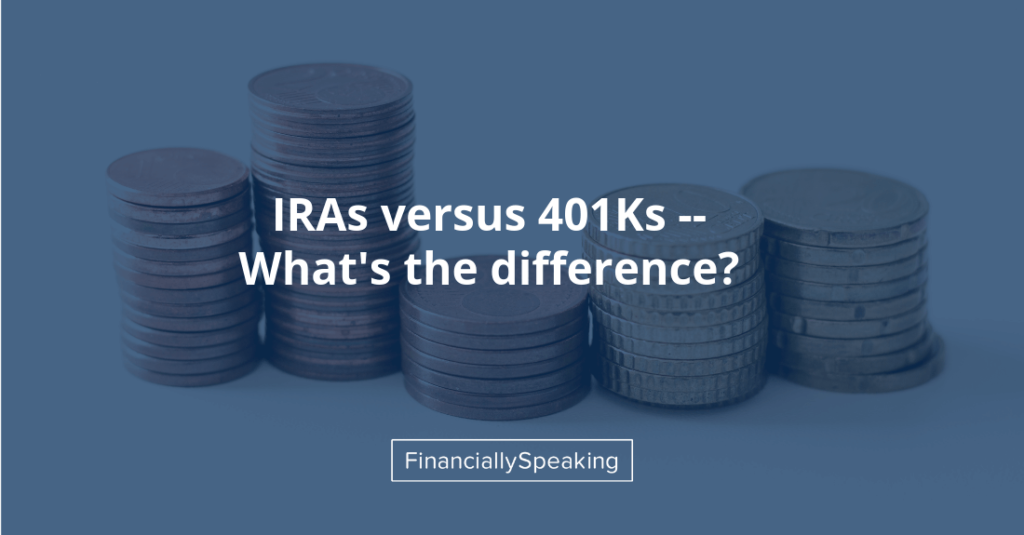What are the differences between IRAs and 401Ks?
IRAs and 401Ks are similar in many ways but have important differences that can be confusing. And, it’s not just IRAs versus 401Ks but there are distinctions for pre-tax versus after-tax, inherited, non-deductible, and self-employed.
Our federal government, exercising its infinite wisdom, chose to label them in the most unfriendly of ways. Some are known by the relevant section of the tax code (401K and 403B), some are known by the US Senator who created them (Roth), and some just have meaningless labels associated with them because… well, who knows, but probably because they came first (Traditional).
There are three main differences between 401Ks and IRAs:
1. Plan sponsor: A 401K is administered by your employer; an IRA is self-administered (hence the name — “Individual Retirement Account”)
2. Contribution limits: The maximum contribution to a 401K is $19,000 per year with another $6,000 of “catch-up” contributions for anyone age 50 or older. For IRAs, the maximum is $6,000 plus another $1,000 for those age 50 and older. For self-employed workers, SEP-IRA contributions can go as high as $56,000. These limits are inflation-adjusted over time.
3. Income limits: For 401Ks, there are no income limits for eligibility to contribute. For IRAs, there are complex rules depending whether you’re self-employed or not, you or your spouse have a retirement plan with your employer, etc. To simplify a bit, you can contribute to an IRA if your income is below a certain level, even if you have a workplace 401K, unless your self-employed, in which case there is no income limit.
Both types of plans may offer pre-tax and after-tax contributions, but not always. As a reminder:
- With a Traditional, you receive a tax deduction in the year in which you make the contribution to your retirement account, but you will pay ordinary income tax on all distributions. This is sometimes called a “pre-tax” plan — i.e., your contribution is tax-deductible but you will pay tax later.
- With a Roth, you receive no tax deduction at the time the contribution is made but the distributions are tax-free (with a few early withdrawal exceptions that I won’t detail). This is sometimes called an “after-tax” plan — i.e., your contribution is not tax-deductible but you will not pay any tax later.
My primary guidance is that any type of retirement account is a good deal, compared to doing nothing. You’re either getting a tax break now or a tax break later so take advantage of Uncle Sam’s generosity. The worst move is to freeze from indecision and do none.
